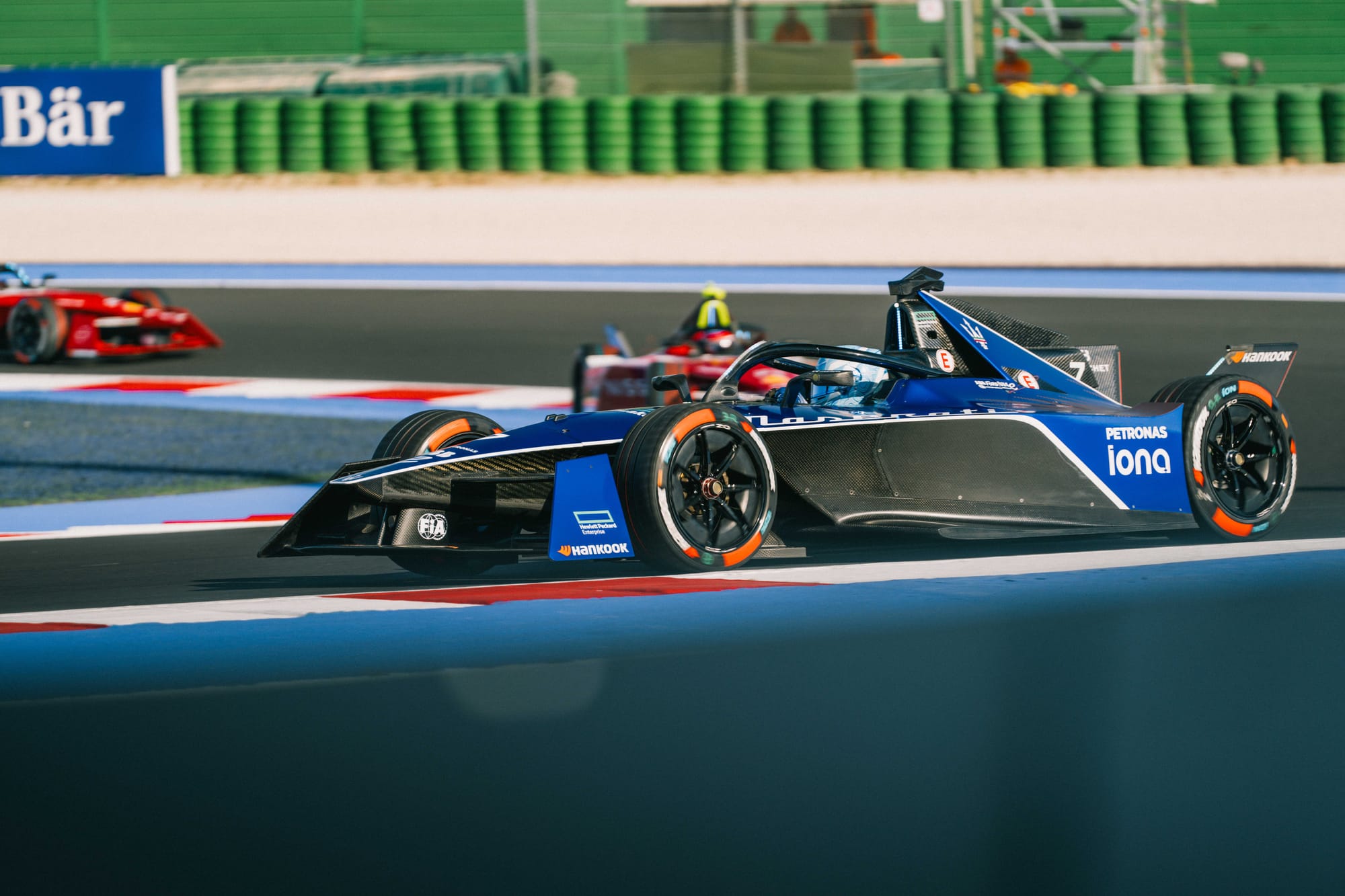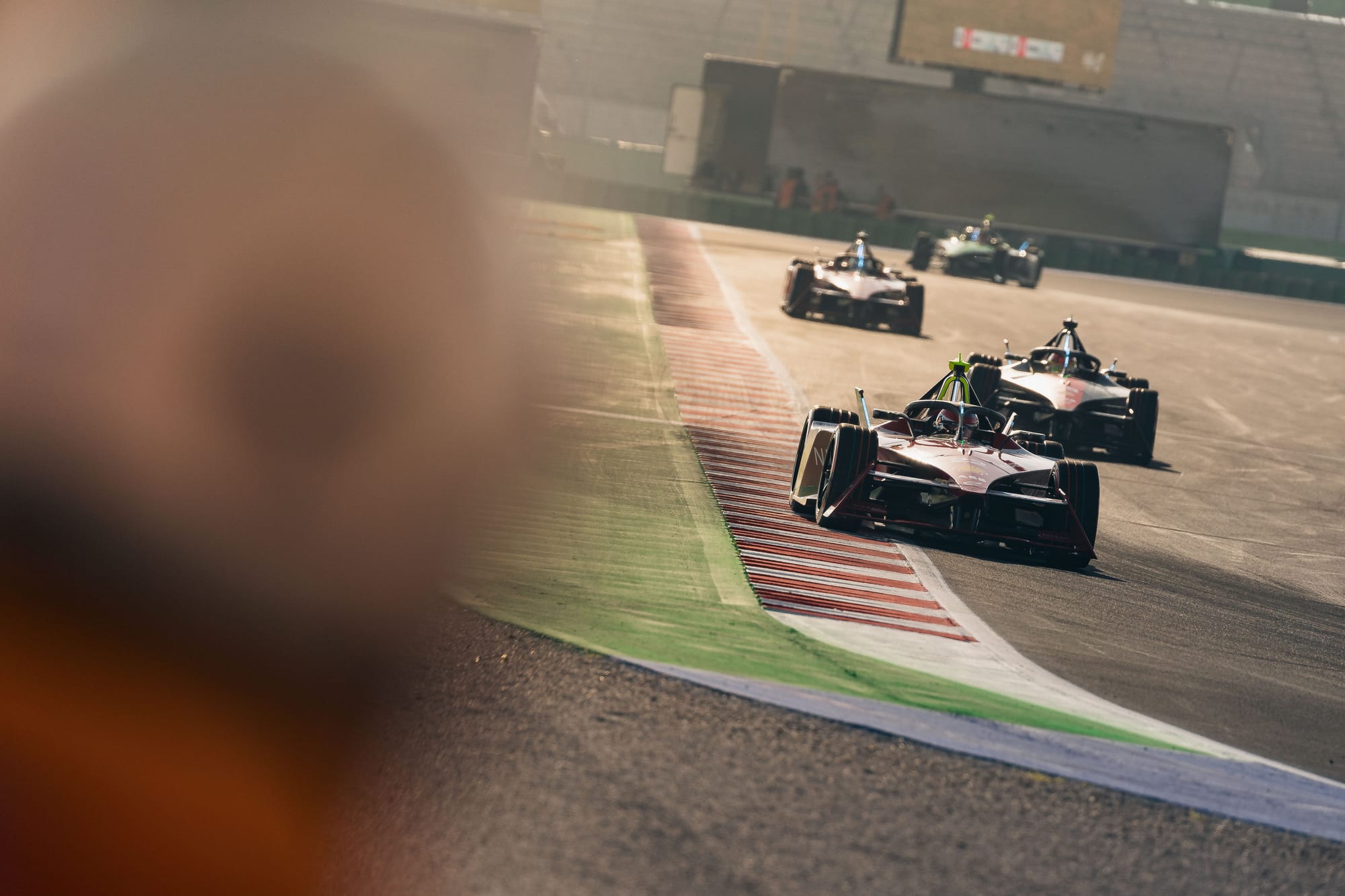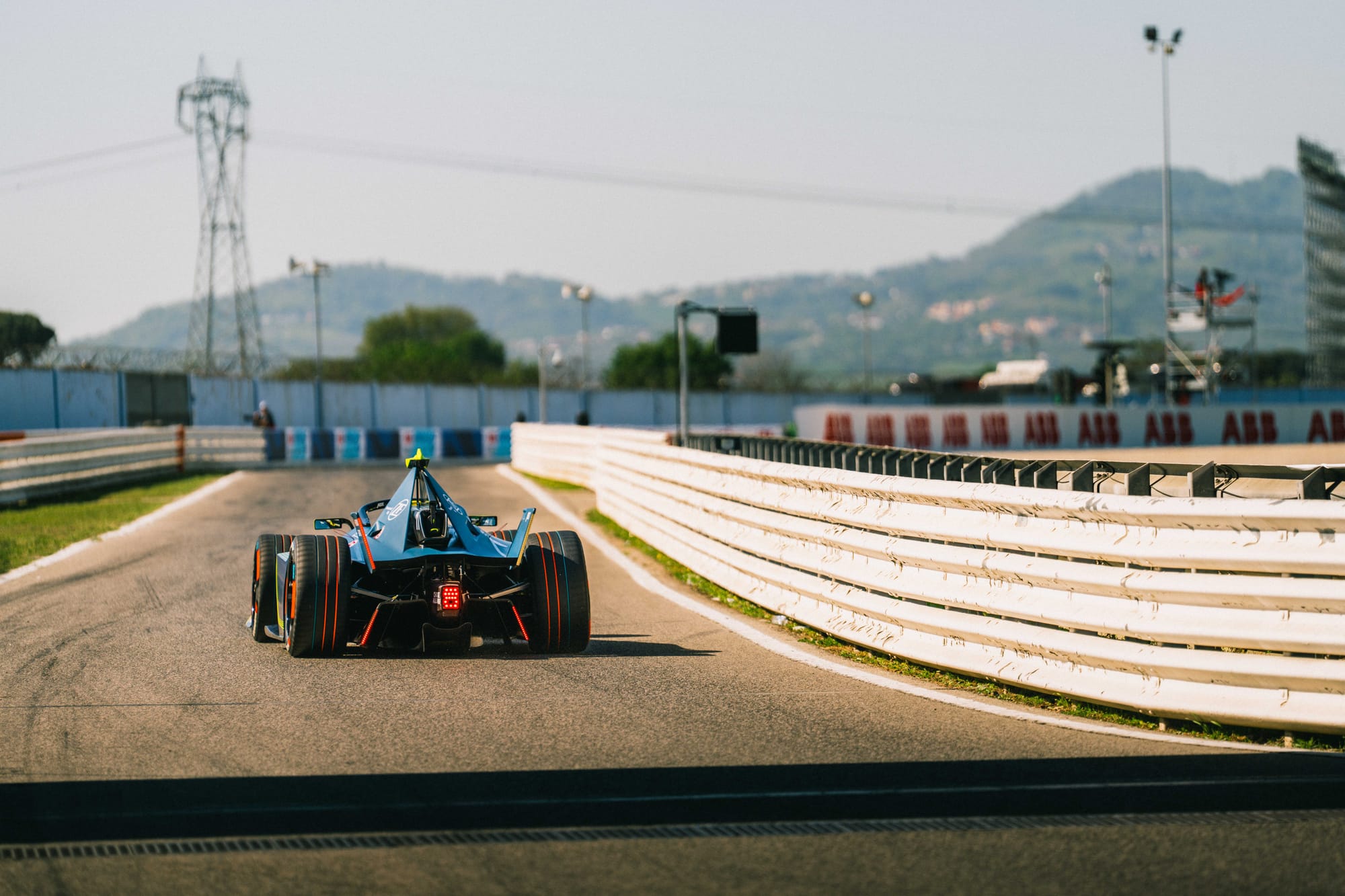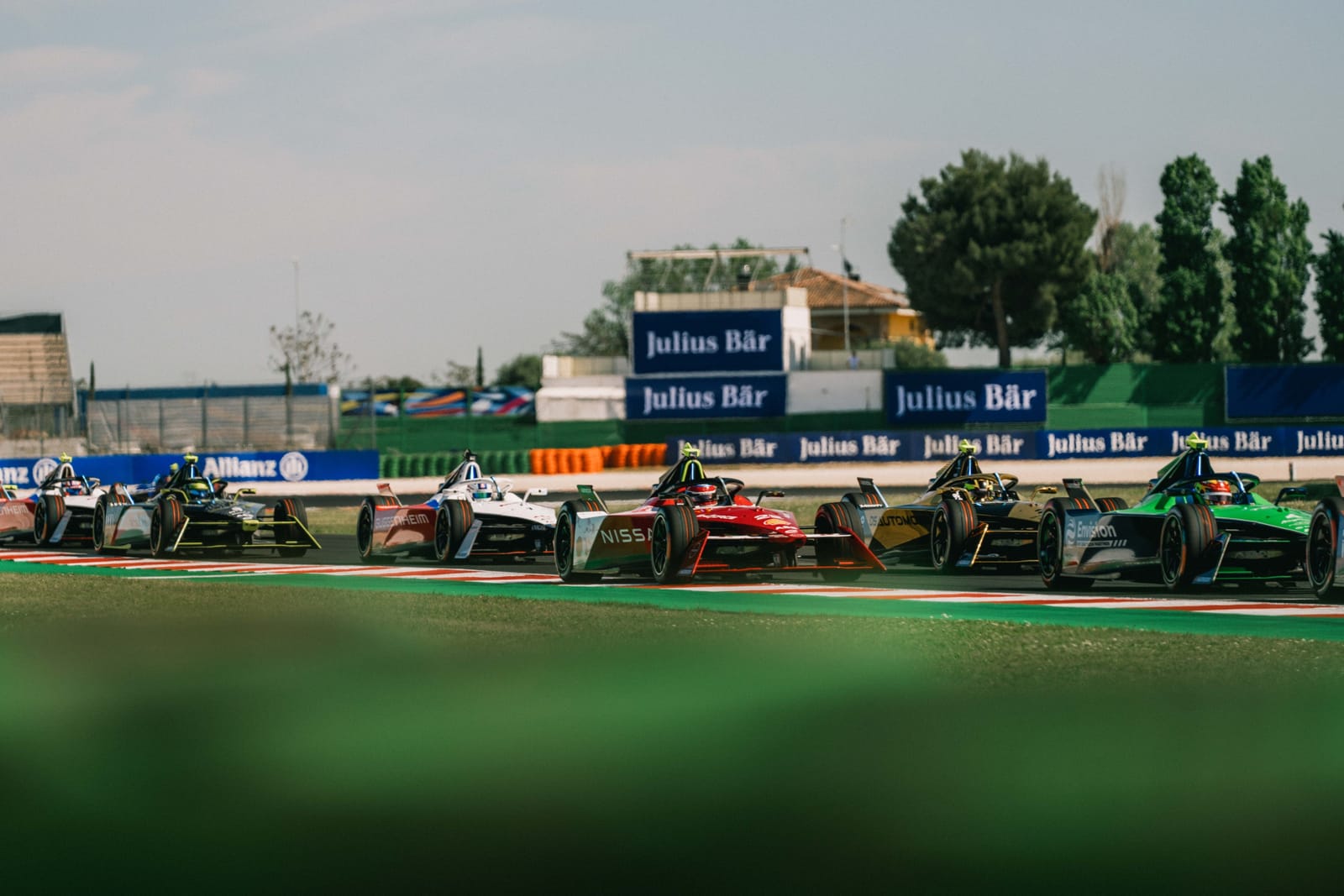until Abu Dhabi Autonomous Racing League

The FIA and Formula E are now highly unlikely to introduce the ‘attack charge’ energy-boosting pitstops during the 2024 season.
The Race revealed last month that the original plan of it being used in races later in the 2024 season after testing in free practice sessions was being delayed again.
This followed problems encountered when it was tried in practice at the first race of the season at Mexico City.
The fast-charging technology and infrastructure, which is technically managed by the Fortescue WAE company, travels with the Formula E paddock but has not been used on-track at all in the most recent events at Tokyo and Misano.
The plan had been to use the chargers in-race at Misano.
Now, with the cadence of races from Sao Paulo in March to Portland at the end of June being either every two or three weeks, the options for dedicated further testing away from E-Prixs are reduced.
The Race understands it might even not be used again until the Valencia test in November.
FIA circuit sport director Marek Nawarecki suggested at Misano last weekend that attack charge development would now take place away from races.
“The current status is that we have identified a couple of points that we still need to continue to work on, in terms of development,” he told The Race.
🚨 FAST CHARGING FIRST-LOOK 🚨#FormulaE teams are testing the new attack charge boosters at Valencia ahead of their 2024 debut.
— The Race (@wearetherace) October 24, 2023
Eight of the units are being shared among the 11 teams this week.
Here's McLaren's Jake Hughes receiving an energy boost ⤵️
🗣️ @sniffermedia pic.twitter.com/PsKHPEOP5M
“We said that we prefer to let our suppliers and our teams continue to work in that part of development, the remaining part of development, outside of the E-Prix to not have any implications during the race weekend.
“When this development part will be completed, then we will take the decision about the possible implementation.”
Formula E’s promoter Formula E Operations is known to still be keen to use the attack charge idea simply because it will get more energy into the cars for races to improve sporting options.
But when asked specifically if attack charge - which has been in the regulations since the start of 2023 but never activated - would be seen in races in the 2024 season, Nawarecki replied: “I cannot say specifically if it will not happen this season, most probably we will have to wait a bit before we have the complete validation of this technical solutions.
“That means, from our side, we don’t want to take any technical risks related to the implementation of this new feature.”
An overarching consideration teams and drivers are concerned about is races being affected by a technology that is not fully developed, and that increasing the chances of it having a direct impact on race results or the brewing championship battle - a concern the FIA “also take on board”, according to Nawarecki.
“We have a very strong consideration for that,” he said. “It’s not, I would say, only our decision for that, but this is clearly what we took on board.
“I can tell you that it’s not something where we will try to force implementation. We need to finalise it first and we need to do it at the appropriate moment.

“I agree that maybe the end of this season won’t be the most appropriate moment to do it.
“Definitely in all projects but specifically in this one we are in the approach of continuous learning and improvement. Especially when we are dealing with new technologies or advanced technologies in some aspects and this is definitely part of the technical challenges of Formula E.”
When asked if the overall learning from the attack charge project will inform future strategies on technology implementation in Formula E, Nawarecki said that the timeframe of regulatory change and innovations within was key.
“To answer your question regarding if we took on board learning from the current generation, yes definitely,” he said.

“For the next generation what we intend to do is to adapt even better the timeframe of the project to give our suppliers but also the manufacturers and the teams more time to prepare for the technical evolutions.
“More time for the validation also, which is challenging because more time doesn’t mean that it’s easier to achieve some goals.
“The difficulties that we faced with the current generation was also because the project is ambitious in terms of technology, as the time is a constraint and we have to support the whole process all together.”
WAE faced challenges in getting its RESS battery design up and running for the Gen3 version of Formula E that kicked off in January 2023.
Several issues had to be addressed including the fundamental one of the precise spec of cell to be used within it.
This was changed relatively late in the development testing phase, and it is this that contributed to a knock-on situation in delaying the reliability and performance proving of the fast-charging boosters.

“A big part [of responsibility] is on the supplier’s side but also a matter of the whole group including manufacturers and promotions and the teams to accommodate as well as we can to this constraint,” said Nawarecki.
“There are some learnings from this and we always try to take out from this work the conclusions to have a better approach for the next one. Actually, we have already started to implement these.”

